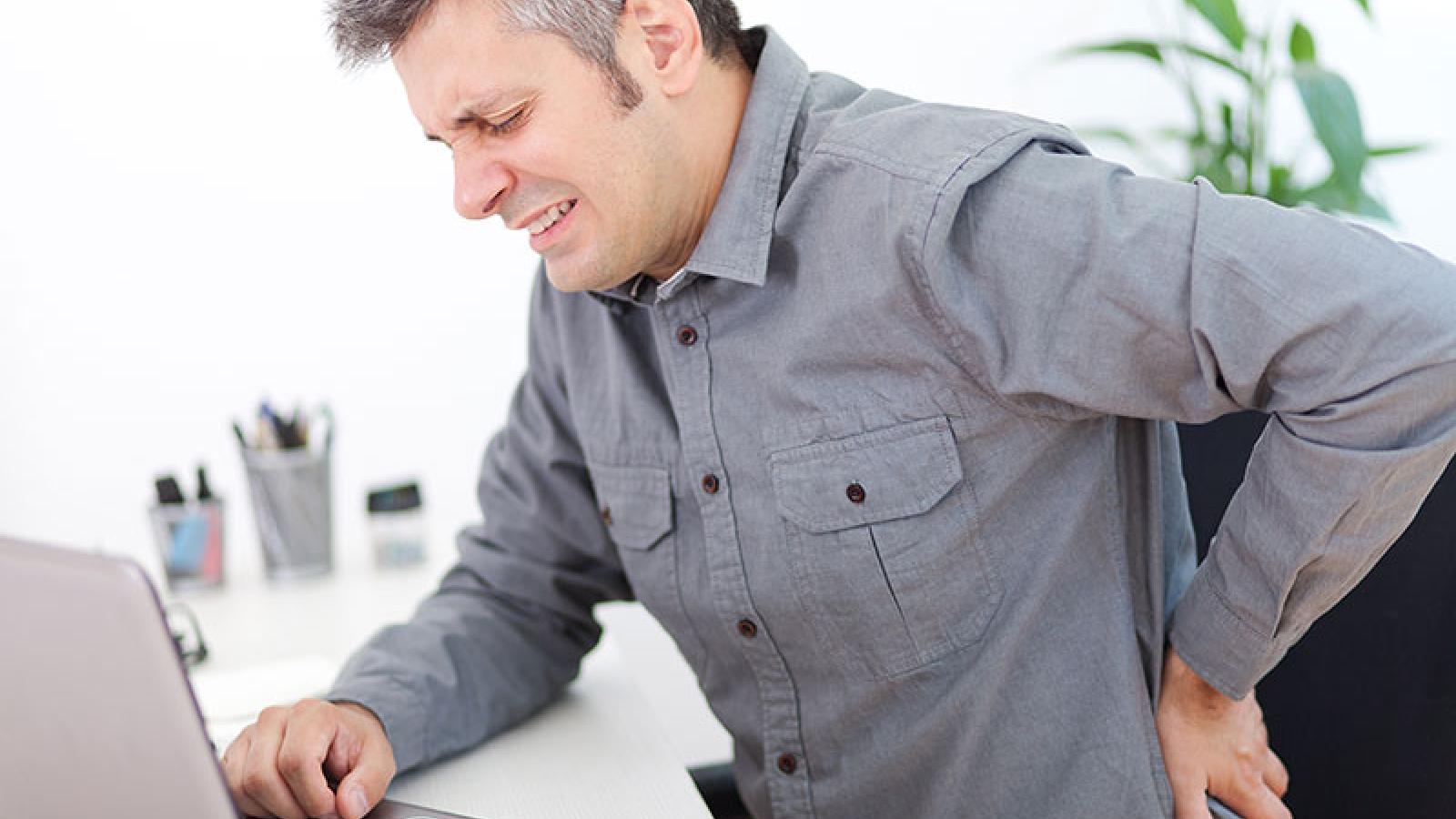How to Relieve Lower Back Pain

Four out of five people will experience some type of lower back pain in their lifetimes. An orthopedic pain management specialist offers pain relief advice.
Low back pain comes in many forms. It can present itself as inflammation, spasms, nerve pain, or just plain aching back, and treatment varies with each symptom. If there isn't any permanent damage showing, like a fracture or significant discherniation, back pain will generally get better with habit changes. The only way to know for sure is to get a full evaluation from a physician who will perform imaging studies –x-rays, MRIs, or CT scans–to determine the source of the pain.
What causes lower back pain?
If you suffer from low back pain, you're in the majority. Four out of five people will experience some type of low back pain in their lifetimes. Why? The back is a complicated place. The backbone is a stack of more than 30 bones. They create a canal that surrounds and protects the spinal cord, where tiny nerves enter and exit. The vertebrae are held together by muscles, tendons and ligaments. Between the vertebrae are 23 discs, the shock absorbers that prevent vertebral collisions when we walk, run, and jump. Those discs also help our spines to bend, twist and extend. The lower back, or lumbar region, carries most of our weight, so it's not surprising that it's the site of most back pain, often caused by poor posture and poor lifting techniques.
Select from many low back pain treatment options
Conservative treatment options your doctor might prescribe after determining the source of the problem are medications, physical therapy, or perhaps a brace. Interventional therapies for conditions like arthritis, joint strain, discherniation, and spinal stenosis (a narrowing of the canal that holds the spinal cord and squeezes the nerves) include injections of local anesthetic and/or steroids to the problem area. These injections can now be done under x-ray guidance as an outpatient in a surgical center.
See the doctor... or go it alone?
Should you see a doctor about your back pain or just wait it out? It is never too soon to visit the doctor. If you have pain that persists for more than two days with bed rest, or if you have pain that shoots to your extremities, you need to make an appointment. An early visit can help you avoid more damage and consequently increased pain. Also, if you have a history of back pain or a recurring problem, the doctor can educate you on proper lifting techniques and other body mechanics, and most importantly, educate you on what is causing your pain. Seeking professional medical advice is the best way to find the treatment option that's right for you.
A Smoking Gun?
Perhaps the most under recognized cause of back pain is smoking. The vertebrae are filled with a bed of capillaries that supply nutrition to the area. The capillary bed in the spine is already very fragile, and the vessels are very small. Smoking causes the capillary bed to narrow and as a result of little to no nutrition or hydration, the discs are more susceptible to drying out and injury, and can't recover once they have been injured.
| Request an Appointment |
|---|
|
The Guthrie Spine Care Clinic can give you relief from pain in your lower or upper back and improve your quality of life. Guthrie’s Spine Care team will create a personalized plan to address your individual symptoms and diagnosis. |
Copyright 2016-2022 © Baldwin Publishing, Inc. All rights reserved. Health eCooking® is a registered trademark of Baldwin Publishing, Inc. Cook eKitchen™ is a designated trademark of Baldwin Publishing, Inc. Any duplication or distribution of the information contained herein without the express approval of Baldwin Publishing, Inc. is strictly prohibited.
Editorial Review: Andrea Cohen, Editorial Director, Baldwin Publishing, Inc. Contact Editor
Learn more about Baldwin Publishing Inc. editorial policy, privacy policy, ADA compliance and sponsorship policy.
No information provided by Baldwin Publishing, Inc. in any article is a substitute for medical advice or treatment for any medical condition. Baldwin Publishing, Inc. strongly suggests that you use this information in consultation with your doctor or other health professional. Use or viewing of any Baldwin Publishing, Inc. article signifies your understanding and agreement to the disclaimer and acceptance of these terms of use.

